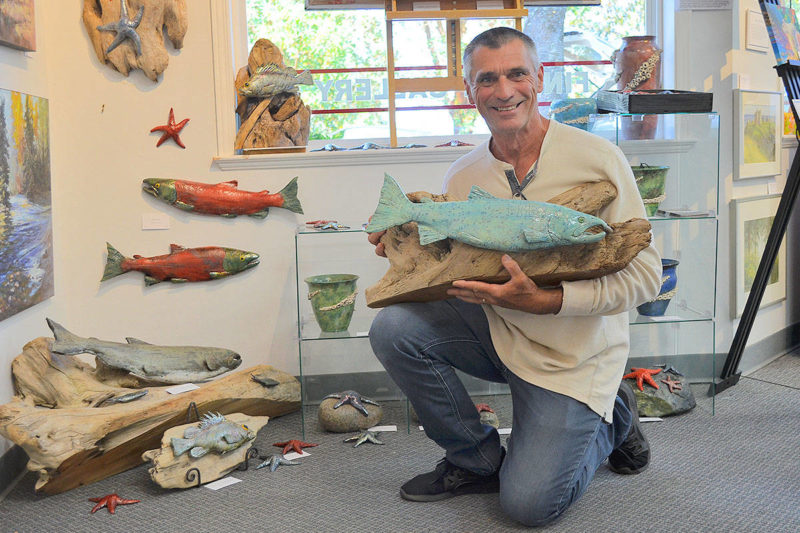A Powell River artist who fell in love with raku-fired ceramics more than three decades ago has hidden pieces of his work on Vancouver Island and the Sunshine Coast for people to take home.
Ed Oldfield said he was first introduced to raku pottery while attending a British Columbia Art Teachers’ Association workshop in 1989.
“I saw that, and it was just absolutely stunning,” he says. “And I thought, ‘I have to figure out how to do this.’”
Oldfield, of Powell River, says raku-firing is when the ceramic is heated to approximately 982°C, then quickly sealed in an air-tight combustion chamber with combustibles.
The combustibles then ignite and burn off whatever oxygen remains. This step oxidizes the glaze of the pottery, giving it a metallic, vibrant finish.
The colour of the finish is determined by the minerals in the glaze, the temperature of the clay piece, the type of humidity of the combustibles and how fast the oxygen burns off.
READ MORE: Penticton to become home to a larger-than-life T-rex
Raku-firing is Oldfield’s preferred method since he now finds the normal ceramic firing process turns the colours flat and predictable in comparison.
“When working with raku, the magic is by the end of the day I don’t know what I’m going to get,” he says.
To show his love for the process, Oldfield has an ongoing art project where he creates raku sea stars and hides them on public beaches on Vancouver Island, Powell River and the Lower Mainland.
On the bottom of each sea star, he sketches his website’s address, www.edsraku.com, so people can contact him once they have found his work in the wild.
READ MORE: Stained-glass lighting casts a win to BC salmon artist
The project first started years ago, Oldfield said, at a year-end beach party for his Grade 7 class.
Wanting to give each student a unique parting gift, he thought to create raku sea stars and hide them among driftwood and sand for the youngsters to find.
Since he wanted to make sure everyone found a piece, he created more ceramics than there were students, leaving several sea stars undiscovered.
The beginning of the project truly started that summer when strangers reached out to him once they had found an unclaimed sea star.
To this day, Oldfield said he keeps the project going as a fun way to put his work into the world for people to enjoy.
“Sometimes months will go by before someone emails me. And then sometimes, I’ll get multiple emails a week!”
Since July 1, however, Oldfield has started a similar new project involving orange maple leafs instead of sea stars.
He calls it his ‘215 Project,’ where each maple leaf commemorates and honours the remains of the 215 Indigenous children uncovered earlier this year at a former BC residential school in Kamloops.
He anticipates the project will take a year to complete, both to create all 215 leaves and to hide them along beaches and hiking trails on Vancouver Island and in Powell River.
Oldfield’s work is currently on display at the Qualicum Art Supply and Gallery, as well as at galleries in Oak Bay, Duncan, Bowser and Tofino.
Plan your adventures throughout the West Coast at westcoasttraveller.com and follow us on Facebook and Instagram @thewestcoasttraveller. And for the top West Coast Travel stories of the week delivered right to your inbox, sign up for our weekly Armchair Traveller newsletter!











 Abbotsford heats up with a calendar full of summer fun
Abbotsford heats up with a calendar full of summer fun